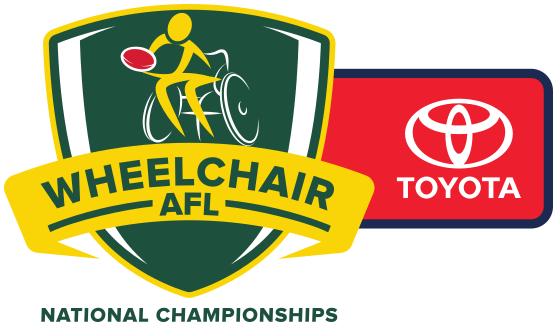Key Rules and Information
Classifications:
Individual Classification: Players will be divided into Classes (1-5) based on their level of impairment and how it affects the way they perform key actions in wheelchair AFL, namely wheelchair movement, handballing, passing, marking, catching, and reacting to contact. For background, the Classes have been developed over 40 years of research in wheelchair basketball and modified to fit the context of Wheelchair AFL. The Classes also acknowledge the residual effects of serving in the Australian Defence Force (ADF) and recognise ADF and Returned and Services League (RSL) players as 4 points. Refer to the By-Laws for a break-down on each classification point.
Playing Field:
There are designated zones (forward, center and defense) on each playing field which dictate where assigned players can play.
a) Two (2) x Forwards: Can move within the forward and center zones.
b) Two (2) x Defenders: Can only move in Center and Back zones.
c) One (1) x Centre: Can move in all zones.
Identifying Players:
Each player will wear colored wristbands to identify their playing positions.
- Red: Defender
- Yellow: Center
- Green: Forward
Disposal:
A handball is equivalent to a kick, and a single-handed underarm throw is equivalent to a handball in Wheelchair AFL.
A players arm when throwing the ball must remain under shoulder height for the disposal to be legal.
Scoring:
A goal is scored when the football is handballed completely over the Goal Line by a Forward Player of the attacking team without being touched by any other player, even if the football touches the ground first.
Players wearing GREEN wristbands are the Forward position players and are the ONLY players on the court that can be awarded a goal/point

